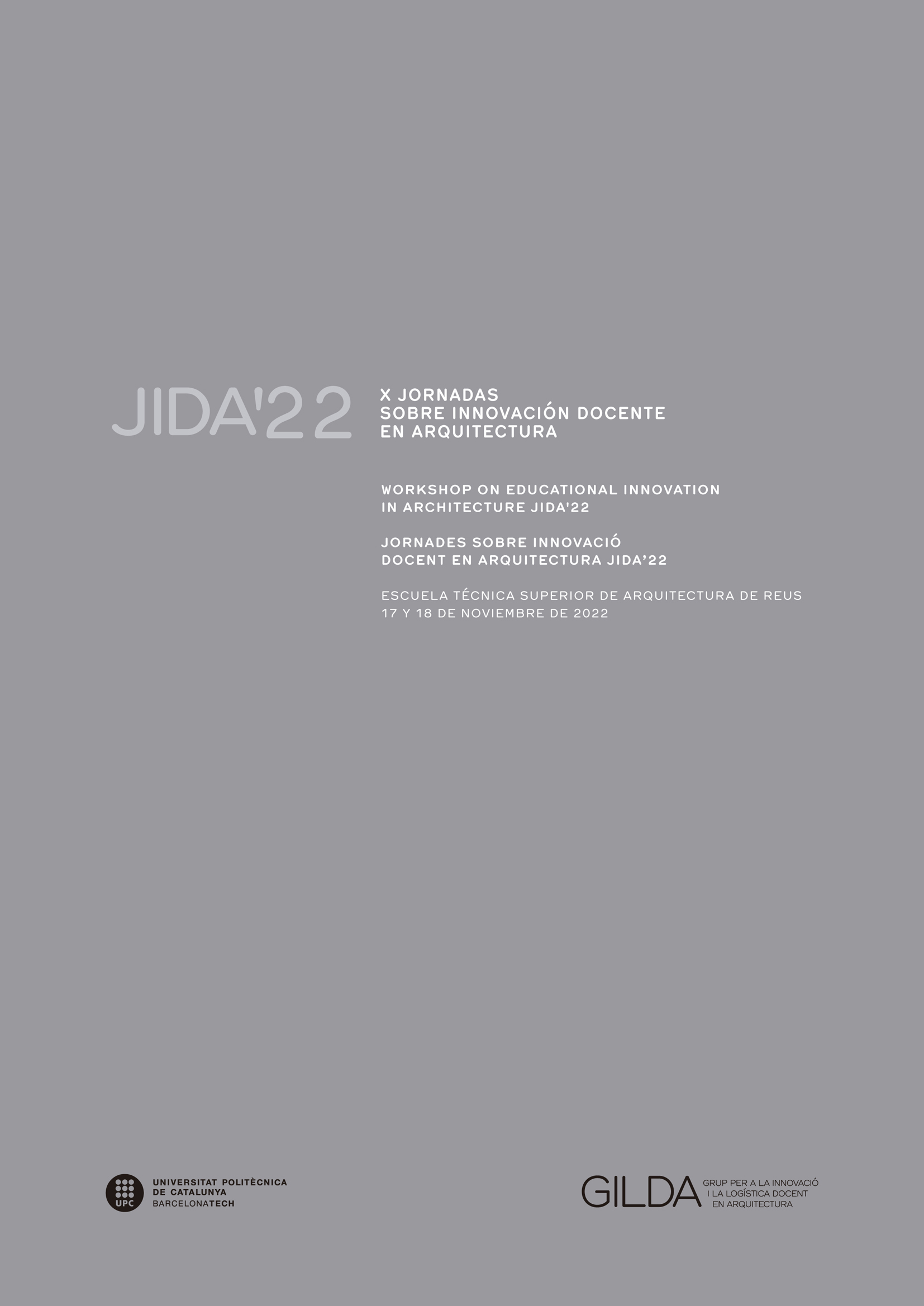AppQ
initial results and next challenges
DOI:
https://doi.org/10.5821/jida.2022.11639Keywords:
mobile application, gamification, videogame, architectural composition, educational innovation projectAbstract
AppQuitectura is a reinforcement tool for learning the subjects of the Architectural Composition Knowledge Area, which uses the game to encourage the approach to the more theoretical subjects of architectural studies. Created as an educational innovation project obtained in a competitive call of the Universidad Politécnica de Madrid (UPM), it consists of a game of questions and answers, with weekly challenges, which tries to take advantage of the widespread use of mobile phones among university students. After a year of hard work by a multidisciplinary team made up of UPM professors from the fields of Architecture and Computer Science, this communication reviews the first tests carried out after its design and before its definitive launch to students, which have detected small errors, but, above all, have shown the possibilities of success of the tool in the student community.
References
ALEXIOU, Andreas y SCHIPPERS Michaéla C. (2018). “Digital game elements, user experience and learning: A conceptual framework” en Education and Information Technologies, núm. 23, p. 2545–2567.
ARMSTRONG, Michael B. y LANDERS, Richard N. (2017). “An evaluation of gamified training: using narrative to improve reactions and learning”, en Simulation & Gaming, vol. 48, núm. 4, p. 513-538.
BARNUM, Carol. (2021). Usability Testing Essentials: Ready, Set ...Test!. Amsterdam: Elsevier.
CARSTENS, Adam y BECK, John. (2005). “Get ready for the gamer generation” en TechTrends, vol. 49, núm. 3, p. 22-25.
DOMÍNGUEZ, A.; SAENZ-DE-NAVARRETE, J.; DE-MARCOS, L.; FERNÁNDEZ-SANZ, L.; PAGÉS C. y MARTÍNEZ-HERRÁIZ, J. (2013). “Gamifying learning experiences: Practical implications and outcome” en Computers and Education, núm. 63, p. 380-392.
LOREN-MÉNDEZ, Mar; PINZÓN-AYALA, Daniel y ALONSO-JIMÉNEZ, Roberto F. (2021). “Participación activa del estudiante: gamificación y creatividad como estrategias docentes” en Actas de las JIDA’21. IX Jornadas sobre Innovación Docente en Arquitectura, Barcelona-Valladolid: Iniciativa Digital Politècnica Oficina de Publicacions Acadèmiques Digitals de la UPC, Publicaciones y Divulgación Científica, Universidad de Valladolid, p. 660-671.
NIELSEN, Jacob. (1994, actualizado 2020). “10 usability heuristics for user interface design” en Nielsen Norman Group. World Leaders in Research-Based User Experience, <https://www.nngroup.com/articles/ten-usability-heuristics/> [Consulta: 18 de septiembre de 2022]
NIELSEN, Jacob. (1994b). “Enhancing the explanatory power of usability heuristics” en Proceedings ACM CHI'94. Boston, MA, April 24-28, 1994. Nueva York: Association for Computing Machinery, p. 152-158.
PROSERPIO, L. y GIOIA, D. (2007). “Teaching the virtual generation” en Academy of Management Learning & Education, vol. 6, núm. 1, p. 69-80.
RUIZ-APILÁÑEZ, Borja. (2019). “Métodos docentes en la Era Digital: sistemas de respuesta inmediata en clase de urbanismo”, en Actas de las JIDA’19. VII Jornadas sobre Innovación Docente en Arquitectura, Barcelona-Madrid: Iniciativa Digital Politècnica Oficina de Publicacions Acadèmiques Digitals de la UPC, Publicaciones y Divulgación Científica, Universidad Politécnica de Madrid, p. 204-214.
WHITENTON, Kathryn. (2019). “Tools for Unmoderated Usability Testing”, en Nielsen Norman Group. World Leaders in Research-Based User Experience, <https://www.nngroup.com/articles/unmoderated-user-testing-tools/> [Consulta: 18 de septiembre de 2022]






















